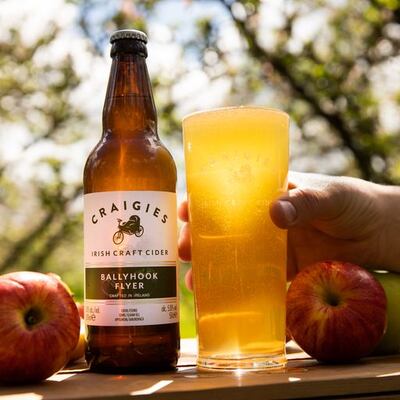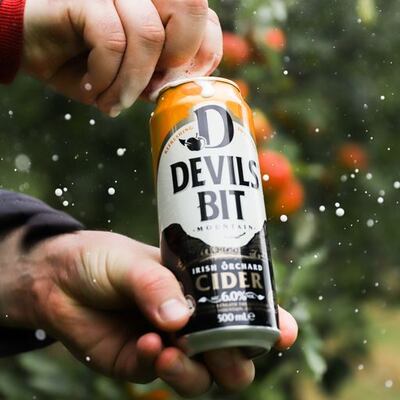Irish craft cider may be a niche sector within the Irish craft drinks industry, but it punches significantly above its weight when it comes to innovation and sustainability. Irish orchards offer minimal C02 emissions, minimal disturbance of natural resources and high carbon sequestration abilities, making Irish craft cider one of the most environmentally friendly alcoholic drinks available. But have you ever thought about how it is made?
Our climate provides the perfect conditions for growing apples, and there are more than 100 different varieties grown in Ireland. Each of the 18 craft cideries located across Ireland uses their own unique blend of apples to produce a range of sophisticated craft ciders that offer complex flavours and unique taste profiles, and which differ significantly to those offered by mass-produced ciders.
This is in no small way down to the fact that Irish craft cider contains on average four times more apple content! The cider is made using apples harvested from Irish orchards that are milled and pressed to release the apple juice. This juice is then fermented by wild or cultured yeasts, resulting in cider. Fermentation can take as little as one week, or sometimes it is deliberately slowed over several months to release unique flavours.

Says Liam McDonnell of Legacy Cider: “True craft cider is generally made by fermenting the fresh juice pressed from apples, similar to the process of making wine from grapes. By comparison, mass-produced cider is often made by first creating a strong ‘stock cider’ from the blending and fermenting of apple juice concentrate, fresh apple juice, sugar and water, which, prior to bottling, is then finally diluted and bulked up around three-fold with water. Some imported ‘ciders’ have virtually no apple content at all and can contain a lot of artificial colourings.
“Craft cider is the purest form of fermented apple juice, and the variety and complexity of flavours achieved comes down to the expertise of the cider-maker and the quality of the apples.”
An apple tree will typically produce fruit for more than 50 years. As it grows and matures, each tree captures and stores increasing quantities of carbon, which helps to mitigate CO2 emissions. Additionally, because there is no annual soil disturbance in orchards such as the tilling and sowing of seeds, carbon is retained in the soil and capture increased. Studies have shown that the carbon sequestration of an Irish orchard is equivalent to 11.4 tonnes of C02 per hectare.

“Craft cider makers generally either grow their own apples or buy apples from local apple farmers, thereby better supporting the rural economy,” says Seamus O’Hara of Carlow Brewing Company, makers of Craigies Cider. “The production of apples makes a significant contribution towards reducing Ireland’s national greenhouse gas emissions, almost on a par with forestry on a per hectare basis. Additionally, the dry remains of the apples which have been milled and pressed, is known as pomace, which local farmers can use as feed for animals, significantly minimising waste.”
The structure of craft cider means that it pairs well with many foods with flavour profiles, ranging from earthy to fragrant, fruity to refreshing acidic. Located right across the country, from Co Cork to Co Down, 18 Irish craft cideries are producing a variety of cider flavours and tastes that can be purchased in Irish supermarkets, off-licenses, bars and restaurants.

These include Scotts Irish Cider, Cavan; Craigies Cider, Carlow; Falling Apple Cider, Carlow; Stonewell Cider, Cork; Killahora Orchards, Cork; Longueville House Cider, Cork; Tempted Irish Cider, Down; Llewellyn Cider, Dublin; Galway Cider Company; Highbank Orchards, Kilkenny; Dan Kelly’s Cider, Louth; The Cider Mill, Meath; Cooneys Irish Cider, Meath; Con’s Irish Cider, Tipperary; Long Ways Cider, Tipperary; Devils Bit Cider, Tipperary; Legacy Cider, Waterford; and Viking Irish Drinks, Waterford.
How do you like them apples?
To find out more about Irish craft cider, visit www.ciderireland.com
Please drink alcohol responsibly






